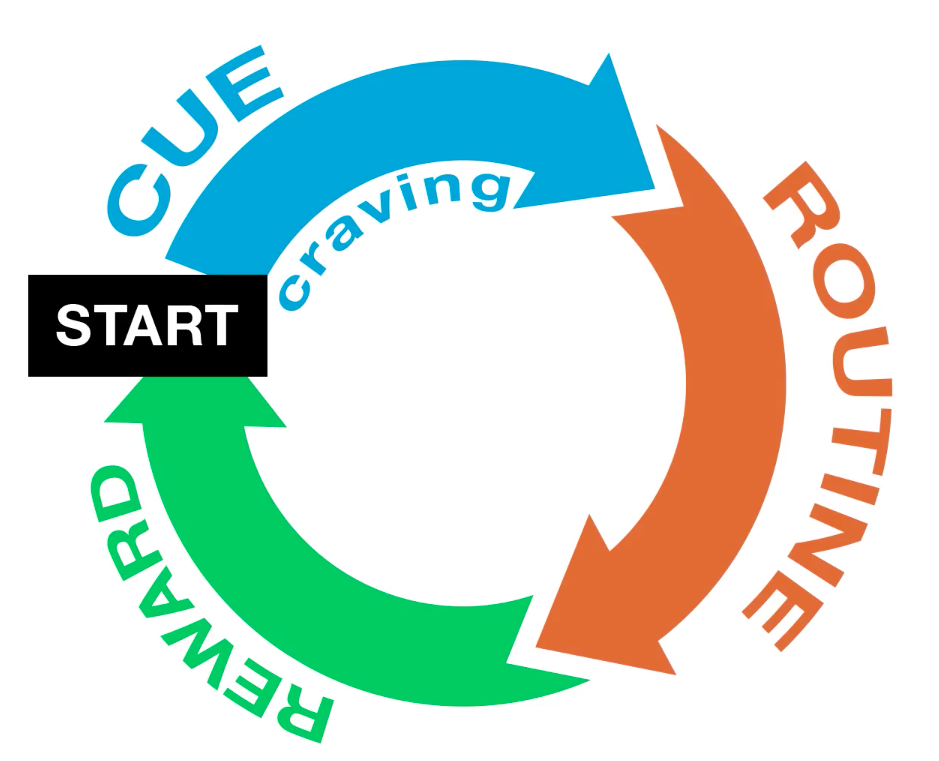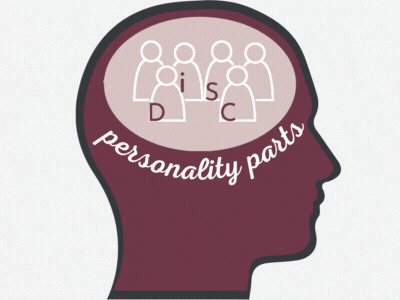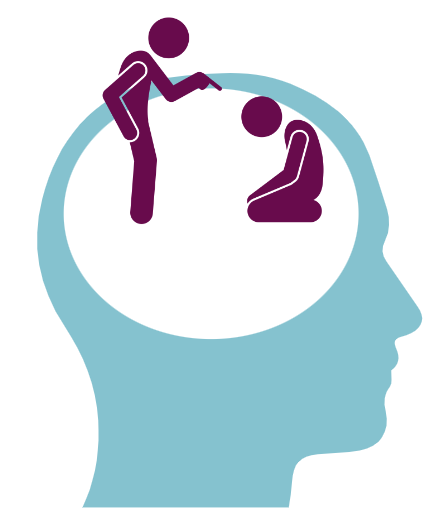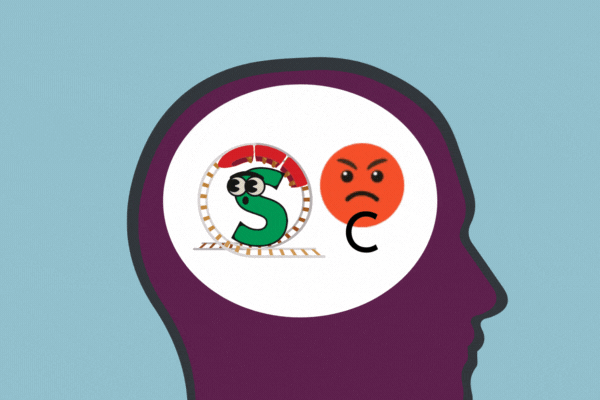Habits are hardwired into our brains, making them helpful/”helpful.” Some habits are truly helpful and they run on autopilot so they don’t use up gobs of brain power. Other habits are “helpful,” meanig they were hard wired for us, but they are not actually beneficial to our lives. This behind-the-scenes habit helpfulness makes them challenging to change.
We go through habit loops on autopilot, and often in the wake of a habit loop, we experience an internal conflict, an inner battle. And when we try to alter or break a habit, we often experience a similar inner battle.
The habit loop, as originally outlined by Charles Duhigg, consists of four components: Cue, Craving, Response, and Reward.

When we incorporate the understanding that our personality parts have their own habits, we have just super-sized our X-Ray vision. Let me back up to the regular sized X-ray vision for a sec… Noticing that we indeed have personality parts is a game changer unto itself: We don’t show up with a monolithic personality. We have personality parts (common parts we see in people are the D, i, S, and C parts). We also have a part that’s not a part – Self (or Omniversal Self as we like to say in DiSC DiSCO™).

If we look at the habit loop and acknowledge personality parts, it’s kind of amazing.
Cue: This is the trigger that initiates the habit loop. Each part has its own sensitivities to cues, based on past experiences and the roles they play within our internal system. For example, a part that’s been conditioned to seek comfort might be triggered by stress, cueing a habit like reaching for junk food. Perhaps this one of the common parts we notice in people, the S, supportive part that’s taking the ride through the loop. S parts love harmony and try to avoid conflict. Junk food is then a helpful/”helpful” way to do this (note the “reward” below is an escape from the conflict).
Craving: The craving is the motivational force behind the habit. It’s what the part really wants—to feel better, to avoid discomfort, etc. The part that’s triggered by stress doesn’t necessarily crave the junk food but the relief or comfort it brings.
Response: The response is the actual behavior, the action the part takes to satisfy the craving. This is the part’s habituated solution to the cue—it’s what the part does automatically, without much conscious thought, because it’s hardwired.
Reward: The reward is what reinforces the habit loop. It’s the immediate benefit the part feels from the response, such as a momentary feeling of comfort or escape from stress. The reward strengthens the habit, making it more likely the part will repeat this loop in response to the cue in the future.
The Internal Conflict: Part vs. Part
Inner conflict arises when one part’s habituated response to its cue and craving leads to outcomes that another part disapproves of or suffers from. This is why we might feel frustrated or disappointed with ourselves—because while one part of us is seeking immediate relief or satisfaction, another part is looking at the long-term consequences and values that are being compromised.

In the example above, perhaps the C part (the conscientious part that loves following rules) watching the loppy-dee-loo that the S loops through and gets mad because “that’s not the way we’re supposed to eat.”

The habit loop concept, especially when applied to internal parts, highlights a bottom-up understanding of emotions and behaviors. It acknowledges that much of our behavior is automatic and driven by underlying needs and fears, rather than being purely a result of rational decision-making.
So what can we do?
Well, first: notice.
And also: acknowledge the helpful/”helpfulness” that comes with being in a biological spacesuit.
Navigating the Conflict
Identify the Parts Involved: Recognize which parts are jumping into the habit loop and what their motivations are. Understanding the needs and fears driving each part can help in addressing the root causes of the habit.
Connect to Self: Let Self, with its qualities of compassion, curiosity, and calmness, lead a dialogue between the conflicting parts. The goal is to understand the cue, craving, response, and reward from each part’s perspective.
Inner teamwork makes the dream work: Purposefully construct a new habit loop that’s more aligned with the goals and well-being of all parts. The crafting of this new loop is led by the Self and is a collaborative effort by the entire inner team (D, i, S, C parts and more), ensuring that the needs of all parts are considered and met in a healthier, more balanced way.